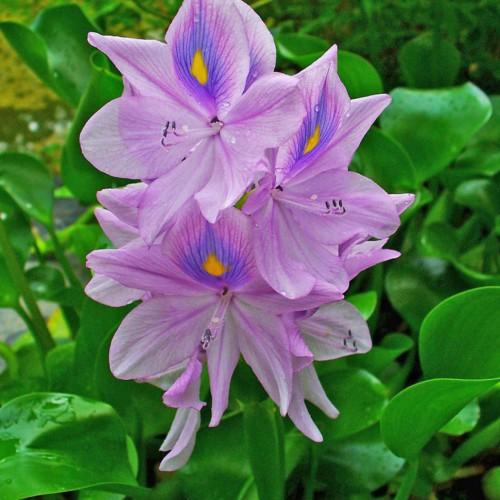
common water hyacinth
Eichhornia crassipes
Also Known As - water orchidCycle:
Herbaceous Perennial
Watering:
Minimum
Hardiness Zone:
9 - 11
Flowers:
Flowers
Sun:
full sun
Soil:
Bog
Fruits:
Fruits In Autumn Ready In
Leaf:
Yes
Growth Rate:
High
Maintenance:
High
Invasive:
Yes
Tropical:
Yes
watering
The common water hyacinth should be placed on standing water. They can live on stagnant water or on with minimum current. Always check the levels of the pond where it is located, add water on the pond when it reaches shallow depths.
sunlight
The common water hyacinth (Eichhornia crassipes) is a semi-aquatic tropical plant species native to the Amazon River basin. It requires plenty of sunlight to grow and thrive, which can vary depending on the strain of the hyacinth and its environment. For best results, the water hyacinth should be placed in a spot where it receives at least 4 hours of direct sunlight throughout the day.
pruning
Pruning of common water hyacinth (Eichhornia crassipes) should be done on a regular basis to maintain the plant's health and vigor, as well as to keep the plant in the desired growth shape. Pruning should be done moderately in the early spring, before new growth begins. Utilize a sharp garden shear or pruning saw to trim back up to 1/3 of the plant’s height from the foliage and the roots. A second pruning should take place in mid-summer, after the early spring growth has had a chance to develop and the plant reaches its peak size.
